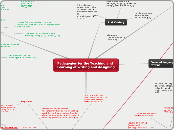Pedagogies for the Teaching and Learning of writing and designing
Genre Based Approach
Sequence of writing (Anstey & Bull 2004, p.190).undefined
Immersion
Modelling
Joint Constuction
Independent Construction
Reflection
Real-world examples and experiences
Also known as the functional approach to teaching writing (Anstey & Bull 2004, p.189).undefined
focuses on how purpose, social context, sturcture and linguistic features are connected.
Genre teaching benefits (Hayland 2004: 10-11)undefined
Systematic. 'Provides a coherent framework for focusing on both language and contexts'
Needs-based. 'Ensures that course objectives and content are derived from students needs'
Supportive. 'Gives teacher a central role in scaffolding student learning and creativity'
Empowering. 'Provides access to the patterns and possibilities of variation in valued texts'
Critical. 'Provides the resources for students to understand and challenge valued discourses'
Explicit. 'Makes clear what is to be learned to facilitate the acquisition of writing skills'
Consciousness raising. 'Increases teacher awareness of texts and confidently advise students on their writing'
Important features of GBA
Structure of all genres taught (Anstey & Bull 2004, p.189).undefined
Text progresses from social contexts
Effective construction of text is a powerful tool for success in life (Anstey & Bull 2004, p.189).undefined
Influenced by purpose and context of writing (Anstey & Bull 2004, p.189).undefined
'language is a system of sound and signs for making meaning' (TESL 2011, ¶ 3)undefined
Emphasis on semiotic systems and how they're used in the construction of meaning (TESL 2011, ¶ 3).undefined
21st Century
People are writing more than ever (NCTE 2009, p.1)
Writers become writers through what could be called, 'an extracurricular social co-apprenticeship' (NCTE 2009, p. 5)
The Age of Composition (NCTE 2009, p.5)
Students are faced with many different contexts in which to write: Social media sites, instant messaging, blogging, emails and texting (Lenhart et al 2008, ¶ 1).
Value of language and writing
Ability to use language and writing effectively, is highly valued in society (Anstey & Bull 2004, p.189).undefined
The ability to communicate is foundational part of humanity
The study of English 'creates confident communicators, imaginative thinkers and informed citizens' (ACARA 2011)
The study of English would be impossible without language and writing.
Skills Based Approach (SBA)
Bottom up theory (Anstey & Bull 2004, p.170)undefined
First develop skills then meaning (Anstey & Bull 2004, p.169)undefined
Taught from simple to complex (Anstey & Bull 2004, p.108)undefined
Handwriting, grammar, punctuation, spelling
Compositon, Sentences construction, Paragraph construction
Meaning
Writing
Negatives
Students not from Anglo Saxon Backgrounds were disadvantaged (Ansty & Bull 2004, p.171)undefined
Important features of SB Approach
Focuses on skills needed to write: handwriting, spelling, grammar and punctuation. (Anstey & Bull 2004, p.169)undefined
Scribbles and drawings - not considered writing
Pre-schooling, students were believed not to be able to write (Anstey & Bull 2004, p.174).undefined
Implicit teaching (Anstey & Bull 2004, p.171)undefined
Surface features: spelling, grammar, punctuation, neatness are a focal point (Anstey & Bull 2004, p.169)undefined
Popular until around the 1980's (Anstey & Bull 2004, p.169)undefined
The traditional/historical way of teaching writing (Anstey & Bull 2004, p.169)undefined
Quantative (Anstey & Bull 2004, p.172)undefined
Assessment
'Methology based on observation and collection of work samples' (Anstey & Bull 2004, p.172)undefined
Prescribed topics with deadlines. (Anstey & Bull 2004, p.174).undefined
Process Based Approach (PBA)
1980: Transition from skills based approach to focus on the process (Anstey & Bull 2004, p.172).undefined
Top- Down approach
Focuses on meaning then moves to the surface level of grammar, spelling, punctuation etc.
Semantics first
Syntax later
Meaning/Purpose/audience
revising/rewriting
Editing/publication
Grammar
spelling
punctuation
Handwriting/presentation
Three stages of writing process (Anstey & Bull 2004, p.172)undefined
The stages
Pre- writing
- Incubating
-Rehearsing
-Researching
-Discussing
Writing
Drafting
Post-writing
1. Publication
Despatched to intended audience
2. Readers' response
3.Writers' reflection on the experience
Student/Teacher Conferences (Anstey & Bull 2004, p.174).undefined
Conference run by the student
Allows students to have a sense of ownership
Refered to as the 'Conference Approach
Types of conferences that are commonly used in the classroom context (Anstey & Bull 2004, p.180)undefined
Individual Conferences
Group Conferences
Small teaching Groups
Publishing conference
The process (Anstey & Bull 2004, p.178).undefined
- Stimulus/Respones
-Pre-writing
-Drafting
-Revising
-Editing
-Proofreading
-Response from peers, adults, teachers
- Publishing
Enables students to succeed independently through communicating about their writing by getting them to talk about their writing at every step of the writing process (Gocsik 2005, ¶ 4).
Negatives
'Doesn't address the social practises of writing' (Anstey & Bull 2004, p.192)undefined
Important features of PBA
Recognised child's scribbles and drawings were early stages of writing (Anstey & Bull 2004, p.173).undefined
Drawings/ scribbles convey meaning
Not sequential; writers can begin anywhere
ownership and choice valued (Anstey & Bull 2004, p.174). (Walshe, 1981, p.9)undefined
Ownership causes students to be more motivated and more work is completed as an outcome.
Circular and recursive (Anstey & Bull 2004, p.178).undefined
Focuses on Meaning, Purpose and Audience (Anstey & Bull 2004, p.172).undefined
Focus on qualitive not quantitive (Anstey & Bull 2004, p.172)undefined
Uses real-world Examples and experiences (REFERENCE)
Uses dialoge as a teaching technique (Gocsik 2005, ¶ 4).
writing-as-a-process can be taught’ (Gocsik 2005, ¶ 4).
Based on the 'real world'
Based on research done into how professional writers write (Trupe 2001, ¶1).
Professional writers use preparation, editing and collaboration before publishing (Trupe 2001, ¶1).
